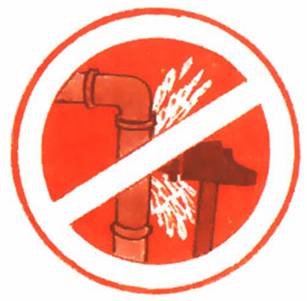<<back
Lesson Plan VIETNAM
I. Vietnam
I.1. Water and environmentally sustainable development
I.1.1. Overview and Background Information
No one disagrees that water is a very important component in determining quality of our lives. It means that people must concern with water they drink. Although water covers more than 70% of the Earth, only 1% of the Earth's water is available as a source of drinking. If our society still continues to contaminate this precious water resource, it is not impossible that our lives are in danger. Water is good solvent which is able to dissolve most organic and inorganic matters. Therefore, any waste that our society dumps into the water resources can contaminate the water and destroy our lives.
By learning this lesson, learners are expected to use water wisely and efficiently, to be responsible for protecting water resources, and to care of others.
I.1.2. The Lesson Plan
Subject Matter area |
Moral education |
Time duration |
Theme |
Relations with natural environment |
|
Topic |
Saving and protecting water resources |
|
Grade |
3-5 |
|
Specific concepts covered in the lesson |
- Importance of water in daily life
- Real situation of water resource in local area
- The causes of water resource pollution
- Using water properly
|
|
Human values addressed |
- Right conduct: protect water resource in the family, school and in the local area
- Truth: wise and efficient to use water
- Love: save, care, and concern to others
- Responsibility: reject any action polluting the water
|
|
Lesson objectives |
At the end of the lesson, learners should be able:
- To understand the importance of water
- To understand the necessity of using water reasonably, economically, and protect water resource
- To increase the sense of objection to bad behavior, such as: wasting water, polluting water resource
- To describe good ways in using water sensibly and economically
|
|
Materials needed |
- Samples of water from different water resources, for example: river water, lake water, well water, tap water, rain water
- Worksheet 1,2
- Papers size A0, A1
- Photographs, pictures collected from magazines about activities polluting water and water resource
|
|
Teaching-Learning Steps: |
50 mins |
Introductory or Motivational activities |
- Teacher asks learners to mention the use of water at their home
- Teacher asks learners to describe problems related to the lack of clean water based on their experiences they face in daily life
|
5 mins |
Lesson proper

|
Step 1: Activity 1 - What is water used for?
Aim: Learners understand that water plays an important role in daily life.
- Divide the class into three or five small groups of 5-6 learners
- Distribute worksheet 1 (Attachment 6.I.1.2) to each group
- Learners discuss in groups to list out in detail worksheet 1.
- Each group’s representatives present their group’s discussion.
Teacher writes discussion results (example: water is used for eating, drinking, showering, washing, cleaning, brushing teeth, watering plants, food processing, etc.) |
10 mins |
Step 2: Activity 2 - What can we do with waste water/used water?
Aim: to develop/encourage a sense of using water sensibly and economically
- Distribute worksheet 2 (Attachment 6.I.1.3) to each group.
- Learners discuss in groups to list out activities to reuse waste water in detail on worksheet 2
- Group’s representatives present group’s discussion to the class
- Introduce learners the pictures illustrating/showing the reuse of waste water, and the shortage of water.
|
10 mins. |
|
Activity 3: Study about water resource in the local area
Aim: to develop/encourage a sense of protecting water resource from pollution
- Learners work in groups to observe water resource directly or to observe by use of microscope. The water samples are: river water, ponds water, lake water, well water, tap water, and rain water.
- Compare water samples mentioned above
- Discuss in group for answering the question: Which water samples are polluted and what can we do to protect water resource from pollution?
- Each group’s representatives share group results to class.
|
20 mins. |
Closure |
Learners and teacher summarize and emphasize that:
- human being cannot survive without water
- waste water can be reused for some extents. Therefore, we can save water by using water sensibly and economically
- we need to keep and preserve clean water, hygienic environment and should throw waste in the right places, not in the areas of water resources
|
5 mins. |
Assessment / Evaluation |
- Observe learners’ performance
- Reflective test
- Written tests (Worksheets 1 and 2)
|
|
Attachment 6.I.1.1
Suggested materials
Photographs, pictures collected from magazines about actions of wasting water, and polluting water resource.
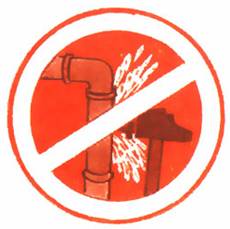
Do not damage pipe lines
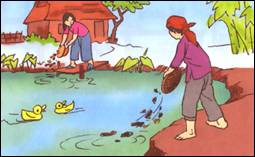
Do not discharge waste into ponds
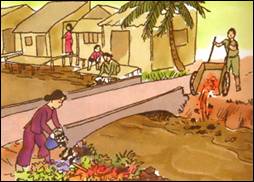
Do not discharge waste into rivers
Attachment 6.I.1.2
Learner activity worksheet
Level : 3 - 5 (Primary level)
Theme : Relations with natural environment
Topic : Saving and protecting water resources
Objectives of activities
- To understand the importance of water
- To understand the necessity of using water reasonably, economically, and protect water resource
- To increase the sense of objection to bad behavior, such as: wasting water, polluting water resource
- To describe good ways in using water sensibly and economically
Process and Steps
Process |
Steps |
Note: Time, etc. |
Preparation for learners to participate in the activities
- Group work set up
- Preparing learning materials
|
- Divide learners into groups
- Checking learning materials:
- Worksheet 1
- Worksheet 2
- Paper A0
- Funnels, cotton-wool or mixture sand and stone
- Photographs / pictures about water, water pollution, the use of water, shortage of water, etc.
|
- 5-6 learners in group
- Before lesson
|
Activities 1
Group work to find out the answers of the question:
“What is water used for?” |
- Observing pictures, sharing self-experience.
- Discussion to fulfill worksheet 1
- Presenting their group’s discussion results to the class
- Learners list out daily activities on how to use the water
|
|
Activity 2:
Group work to answer the question:
“What can we do with waste water/ the used water?” |
- Observing pictures
- Discussion in group about reusing used water
- Filling out worksheet 2
- Presenting their group’s discussion results to the class
- Learners list out activities to reuse waste water
|
|
Activity 3:
Group work to study about water resources at the local area |
- Collecting and observing through microscope the properties of water samples from river, ponds, lake, well, tap, and rain water.
- Discussion in group to answer question: What can we do to protect water resource from pollution?
- Sharing the finding to the class
|
|
Reflective questions:
- What is water used for?
- What can we do with waste water / used water?
- What can we do to protect water resources from pollution?
Attachment 6.H.1.3
Worksheet 1
Using the water for |
The water resources |
Example:
Washing face
Showering
………………………..
………………………… ………………………..
………………………… |
tap water, well water
tap water, well water
-------------------------- -------------
……………………………. …..
-------------------------- -------------
……………………………. ….. |
Worksheet 2
Used water because of |
Can it be reused?
If it is so, what is it reused for? |
Example:
Washing face
Cleaning vegetables
……………………………. …..
……………………………. ….. |
Yes, to water plants
Yes, to water plants
……………………………. …..
……………………………. ….. |
Assessment
Name of teacher : …………………………………………………….
Grade/level : 3-5
School : …………………………………………………….
Subject Matter Area : Moral
Topic : Saving and protecting water resources
Instructional Objectives
- To understand the importance of water
- To understand the necessity of using water reasonably, economically, and protect water resource
- To increase the sense of objection to bad behavior, such as: wasting water, polluting water resource
- To describe good ways in using water sensibly and economically
|
What |
How |
Who |
Knowledge
Learners are able to understand water value for life |
Written test (worksheet 1) |
Teacher |
Problem Solving Skills
Learners are able to use water sensibly and economically |
Play role in group |
Peers and parents |
Scientific Inquiry Skills
Learners are able to observe water resource around school |
Observation of learners activities in experimental works |
Teacher |
Attitude expression
Learners express the awareness about role of water and preventing water pollution |
Listing learners’ attitude |
Teacher |
Value Expression
Learners are able to show actions in daily activities to protect water |
Individual activities and table of learners’ comments |
Teacher and parents |
Personal Expression |
Reflective poster |
Teacher |
I.2. Water, social equity and human dignity
I.2.1. Overview and Background Information
Water pollution mostly results from human activities. There are many sources of water pollution. The most polluting of them are the city sewage and industrial waste discharged into the rivers. The water we use is taken from lakes and rivers, and from underground (groundwater). After using, water can contain chemicals and suspended matters. When we dump the water, it will return into water source locations.
To keep our used water from spoiling our water resources, we have to reduce or remove pollutants before the water gets back into the environment. We can start to save our water resources by putting any waste in the right bins as supposed to.
By learning this lesson, learners are expected to understand the causes of water pollution and to avoid polluting the river water.
I.2.2. The Lesson Plan
Subject Matter area |
Geography |
Time duration |
Theme |
Nature, human beings in the continents – Geography of Vietnam |
|
Topic |
The causes of river water pollution |
|
Grade |
3-5 |
|
Specific concepts covered in the lesson |
- Importance of water in daily life
- Real situation of water resource in local areas
- The causes of water resource pollution
- Protecting water resource
|
|
Human values addressed |
- Right conduct: protect water resource
- Truth: wise and efficient to use water
- Love: save, care, and concern to others
- Responsibility: To care of water and water resources
- Non violence:
|
|
Lesson objectives |
At the end of the lesson, learners should be able to:
- To know the causes of river water pollution
- To be concious and have actions to protect river water resource
|
|
Materials needed |
- Photographs, pictures of river and lake pollution
- Chosen places of river or lake to explore
- Papers A0, whiteboard pen
|
|
Teaching-Learning Steps: |
90 mins |
Introductory or Motivational activities |
Teacher asks learners to mention materials that may lead to river water pollution |
5 mins |
Lesson proper
|
Step 1: Activity 1 - What can pollute river and lake?
Aim: to develop/ encourage a sense of collecting information about causes of river water pollution
- Learners (in pairs) do an observation at some places around a river or lake.
- Learners collect and count things, such as garbage, wrapping papers, falling leaves, nylon bags, and cans of beer, which could be found around the river or lakes.
- Some pairs of learners present their results to the class
|
30 mins |
|
Step 2: Activity 2 - Causes of river water pollution
- Divide the class into small groups (5-6 learners per group)
- Each group discusses any possibilities causing river water pollution
- Each group presents and shares group’s discussion results
- Teacher writes learners’ ideas about the cause of river water pollution on board. For example: waste water from daily activities in the city and countryside, from sewages, from industrial parks, from hospitals; garbage in daily life; and rotten dead animals absorbing into underground water and flow into river
- Teacher gives comments
|
15 mins. |
|
Step 3: Activity 3 - Protect our water resource
Aim: to develop/ encourage behaviour and attitude of protecting river water
- Based the finding in the activities 1 and 2, each group (1-4) discusses any efforts they can do to minimize negative impacts on the environment caused by:
- Leaves and other materials falling into the river (group 1)
- garbage from daily activities around the river (group 2)
- home sewage (group 3)
- industrial sewage (group 4)
2. Each group presents their work to the class
3. Teacher comments |
35 mins. |
Closure |
Learners and teacher summarize and emphasize about:
- The causes of water pollution
- Some activities to protect water pollution, and human values related to them
|
5 mins. |
Assessment / Evaluation |
- Observe learners’ performance
- Reflective test
|
|
Attachment 6.I.2.1
Suggested materials
Photographs, pictures about water pollution
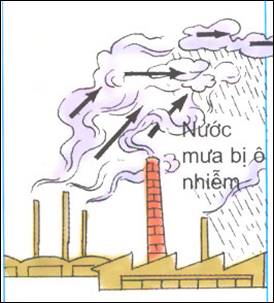
Polluted rain water
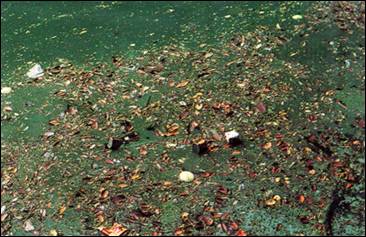
Polluted estuary
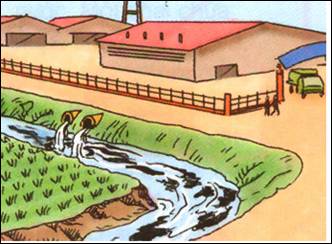
Waste water from factories
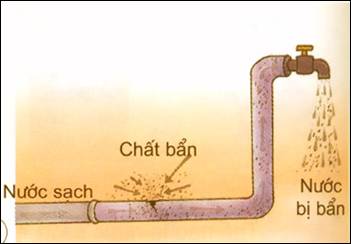
Broken pipe-lines
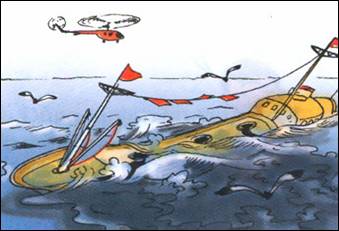
Ship sinking
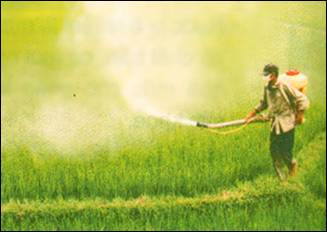
Insecticide spraying
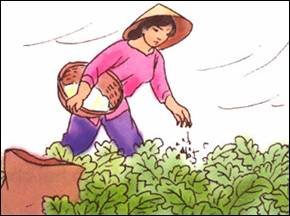
Vegetable fertilizing
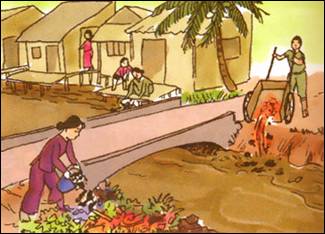
Discharge wastes into the river
Attachment 6.I.2.2
Learner activity worksheet
Level : Secondary school
Theme : Nature, human beings in the continents - Geography of Vietnam
Topic : The causes of river water pollution
Objectives of activities
- To mention the causes of river water pollution
- To be conscious and have actions to protect river water resources
Process and Steps
Process |
Steps |
Note: Time, etc. |
Preparation for learners to participate in the activities
- Group set up
- Preparation to work in a river area
- Preparing learning materials
|
- Dividing class in groups consisting 5 -6 learners in a group.
- Checking learning materials:
- Papers A0, whiteboard and pen
|
- Before lesson
- In classroom
- 5 minutes
|
Activity 1:
Identifying the causes of river pollution
|
- Collecting wastes and materials that they can find around the river which may pollute the river
- Counting the materials
- Sharing the finding to the class
- Some pairs present their work
|
- in the area of a safe river around the school
- 30 minutes
|
Activity 2:
Studying the causes of river water pollution |
- Discussing in group the causes of river water pollution
- Presenting their finding to the class
- Listing out main causes of river water pollution
|
- in the classroom or in the area of the river
- 15 minutes
|
Activity 3:
Indicating some ways to protect water resource at local area |
- Group discussion to answer question: What do you have to do to minimize negative impacts on the environment caused by:
- Garbage falling into the river (Group 1)
- Garbage from daily life (Group 2)
- waste water from sewerage (Group 3)
- Waste water from industrial parks and from hospitals (Group 4)
- Present their group’s discussion
- Discussion in class
|
- in the classroom or in the area of the river
- 20 minutes
- 15 minutes
|
Reflective questions
- Mention what can pollute river water?
- What can you do to protect river water resources from pollution?
Attachment 6.I.2.3
Assessment sheet
Name of teacher : …………………………………………………….
Grade/level : 7- 8
School : …………………………………………………….
Subject Matter Area : Geography
Topic : River and Human life
Instructional Objectives
- To mention the causes of river water pollution
- To be conscious and have actions to protect river water resources
|
What |
How |
Who |
Knowledge
Learners are able to recognize the causes of water resource pollution |
Written or reflective test
|
Teacher |
Problem Solving Skills
Learners are able to protect water resource |
Experimental results |
Teacher |
Scientific Inquiry Skills
Learners are able to observe the causes of water resource pollution around the house, school, and community |
Observation of learners’ works |
Teacher |
Attitude expression
Learners express their awareness of good habits for water river protection |
Observation of learners attitude in experimental work and discussion |
Teacher |
Value Expression
Learners have the action to minimize water resource pollution |
Individual activities |
Teacher and parents |
Personal Expression
Learners appreciate water resource around them |
Writing report and presentation |
Teacher and students |
I.3. Water for health, sanitation and recreation
I.3.1. Overview and Background Information
Water that people drink must clean, with no bacteria or other organism contents that may cause human disease. Unclean water can be known from its odor and color. The odor and color can be the result of microbial activity, or compounds of chemicals such as iron, manganese or sulfur. For example, hydrogen sulfide leading to bad smell is a result of decaying organic matter and the activity of sulfur and iron bacteria. Purification is necessary for safe, healthy drinking water. This requires the use of a filter and some chemicals.
In this lesson, learners will try a very simple way to purify unclean water by use of filter to encourage their responsibility for health, clean and fresh water resources.
I.3.2. The Lesson Plan
Subject Matter area |
Science |
Time duration |
Theme |
Material and energy |
|
Topic |
Polluted water |
|
Grade |
3-5 |
|
Specific concepts covered in the lesson |
- Importance of water in daily life
- Using water properly
- Purifying water
|
|
Learning outcomes |
- To know some ways to purify water
- Practice saving water in the family
- Be conscious of protecting water resource
|
|
Human values addressed |
- Right conduct: protect water resource
- Truth: wise and efficient to use water
- Love: save, care, and concern to others
- Responsibility: have a sense of someone pollutes water resource
|
|
Lesson objectives |
At the end of the lesson, learners should be able:
- To distinguish the properties of clean water and polluted water
- To explain the causes of river or lake water
- To mention side effects of using polluted water resources for human health
|
|
Materials needed
|
- Samples of river water and fresh well water
- 4 empty bottles
- Two funnels
- Filtering cotton
- Magnifying glass
|
|
Teaching-Learning Steps: |
40 mins |
|
Introductory or Motivational activities |
Teacher shows the picture of learning materials and asks learners why the activities need to be done? |
5 mins |
|
Lesson proper
|
Step 1: Activity 1 - Explore some properties of water in natural sources
- Dividing the class into three or five small groups of 5-6 learners
- Each group collect water samples, one bottle of river water, and another one of well water.
- Label both bottles.
- Making a hypothesis about differences of the water. For examples: well water is cleaner than river water because of its less dust content.
- Using 2 funnels and filtering cotton, filter the water and collect them into separate 2 empty bottles.
- Observing the filtering cotton from each funnel (Learners may use a magnifiers glass to observe microorganisms – if any)
- Each group presents their results
|
15 mins |
|
|
Step 2: Activity 2 - Criteria of polluted water and fresh 20 mins
water
- Groups discuss and create their own criteria for polluted water and fresh water
- Groups note their discussion results in the Table 6.I.3.1 below, and present to the class.
Table 6.I.3.1. Water Criteria
Criteria |
Polluted water |
Fresh water |
1. Color |
………………. |
………………. |
2. Odor |
………………. |
………………. |
3. …………. |
………………. |
………………. |
4. …………. |
………………. |
………………. |
|
………………. |
………………. |
- Other groups ask and discuss.
|
|
Closure |
Learners and teacher summarize the results of discussion |
5 mins. |
|
Assessment / Evaluation |
- Observe learners’ performance
- Reflective test
|
|
|
Attachment 6.I.3.1
Materials
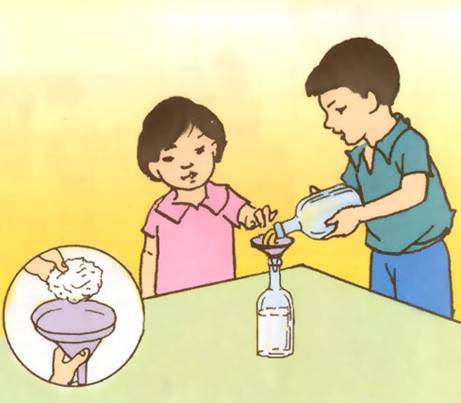
|
Water filter with funnels and cotton |
Attachment 6.I.3.2
Learner activity worksheet
Level : 3 - 5 (Primary level)
Theme : Material and energy
Topic : Polluted water
Objectives of activities
- To distinguish the properties of clean water and polluted water
- To explain the causes of river or lake water
- To mention side effects of using polluted water resources for human health
Process and Steps
Process |
Steps |
Note: Time, etc. |
Preparation for learners to participate in the activities
- Group set up
- Checking learning materials
|
- Dividing learners into group of 5-6 learners
- Preparation of learning materials:
- River water, lake water, used water from washing hands, and clean fresh water in separate bottle.
- Two empty bottles
- Two funnels
- Cotton wool
- Magnifier
|
Before lesson |
Activities
- Activity 1: Exploring the properties of water from natural resources
|
- Collecting river water sample and well water sample
- Labeling bottles of river water and of well water.
- Using 2 funnels with wool cotton to filter the water into 2 empty bottles
- Observing cotton wool after filtering which may need to use magnifying glass
- Discussion in groups
- Sharing group finding to the class
|
15 minutes |
Activity 2:
Criteria to evaluate polluted water or fresh water
|
- Discussing the criteria of polluted water or fresh water
- Discussion in groups to fill the table 1 on the Lesson Plan
- Each group presents their results to the class
- Summarizing final results
|
- 5-6 learners per group
- 20 minutes
|
Reflective questions:
- Mention the properties of polluted or contaminated water!
- Identify the properties of clean water! Are the properties of clean water the same as those of polluted water?
Assesssment sheet
Name of teacher : …………………………………………………….
Grade/level : 3 -5
School : …………………………………………………….
Subject Matter Area : Science
Topic : Polluted water
Instructional Objectives
- To distinguish the properties of clean water and polluted water
- To explain the causes of river or lake water
- To mention side effects of using polluted water resources for human health
|
What |
How |
Who |
Knowledge
Learners are able to understand side effects of using polluted water resources to human health |
Written test |
Teacher |
Problem Solving Skills
Learners are able to distinguish clean water and polluted water |
Group’s experimental results and activities
(Activity sheet) |
Peers and teacher |
Scientific Inquiry Skills
Learners are able to explore the criteria to evaluate polluted water and fresh water. |
Writing a list of some criteria |
Teacher |
Attitude expression
Learners are able to express the awareness of using clean water. |
Attitude table
(Lickert scale) |
Teacher |
Value Expression
Learners are aware of using clean water |
Individual activities |
Teacher and parents |
Personal Expression
Learners appreciate water value for human life |
Writing Report and presentation |
Teacher and students |
I.4. Water in culture, traditions and religious practices
I.4.1. Overview and Background Information
Because of the importance of water and its resources, everyone must be responsible for protect them. People sometimes forget to protect water because they live in regions containing unrestricted local water resources. This unconsciousness responsibility will absolutely harm their lives. Therefore, since early learners should realize to protect water resources.
Learners should be aware of and learn the responsibility for development and implementation of local and regional source water protection since they are at elementary schools. As consequences, learners will establish constructive habits for those responsibilities.
I.4.2. The Lesson Plan
Subject Matter area |
Science |
Time duration |
Theme |
Environment and natural resource |
|
Topic |
Protect water sources |
|
Grade |
3-5 |
|
Specific concepts covered in the lesson |
- The causes of water resource pollution
- Protecting water resource
|
|
Learning outcomes |
- Human daily activities, and water environment and air environment situation
- Practice specific methods to protect environment
|
|
Human values addressed |
- Right conduct: protect water resource
- Love: save, care, and concern to others
- Responsibility: protecting water resources
- Non violence: awareness
|
|
Lesson objectives |
At the end of the lesson, learners should be able:
- To identify activities that should be done and should not to protect water resources
- To improve constructive behavior to protect water resources
- To draw pictures for campaigning water resource protection
|
|
Materials needed |
- Some A0 papers, paint brushes, for groups
- Pictures
|
|
Teaching-Learning Steps: |
90 mins |
Introductory or Motivational activities |
- Teacher shows the purpose of learning
- Teacher asks learners to mention activities of people around them relating to water resource protection.
|
5 mins |
Lesson proper
|
Step 1: Activity 1 - Find the ways to protect water sources
- Asking learners to get a friend for pair activities.
- Each pair of learners observe pictures given on Attachment 1, and choose pictures showing good or bad behaviour to protect water resources
- Some pairs present their work to the class.
- Asking learners to mention what people around them do to protect water sources.
|
40 mins |
|
Step 2: Activity2 - Draw pictures about water resources protection campaign
- Dividing learners into groups.
- Learners in groups make commitment to protect water sources, and design a picture to express the commitments:
- Discuss contents of the picture
- Draw the picture
- Each group presents their results to the class
- Group discussion about protecting water resources
- Teacher comments and emphasizes
|
40 mins. |
Closure |
Learners and teacher summarize about good and bad behavior to protect water resources |
5 mins. |
Assessment / Evaluation |
- Observe learners’ performance
- Reflective test
|
|
Attachment 6.I.4.1
Materials
See the following pictures 1 – 6:
A. Things that shouldn’t be done to protect water resource:
Picture 1. Destroying water pipes that may leave pollutants get into the water
Picture 2. Discharging rubbish into pond that causes pond water polluted and animals in the ponds died
B. Things should be done to protect water source:
Picture 3. Selecting recycled garbage and putting them into a right trashcan.
Picture 4. Using self – disintegrated lavatories to avoid groundwater pollution.
Picture 5. Guttering around wells so that pollutants cannot get into water and mosquitoes do not reproduce well
Picture 6. Building sewage systems
|
Picture 1. Damaging pipe lines |
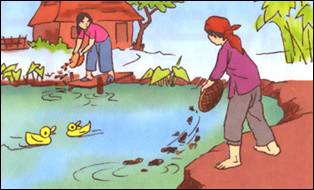
Picture 2. Discharging wastes into ponds
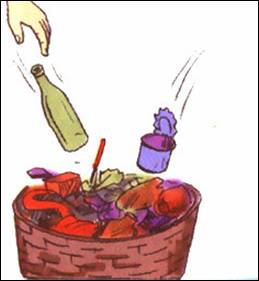
Picture 3. Using dustbin
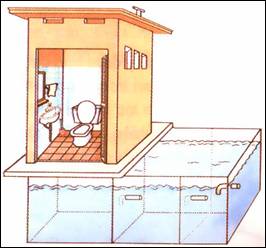
Picture 4. Using self – disintegrated lavatories
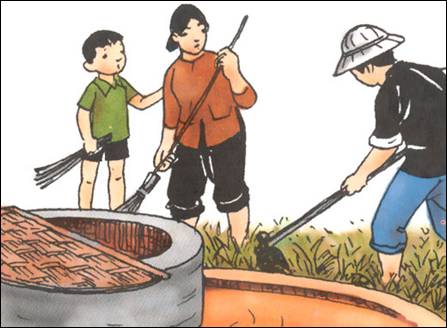
Picture 5. Cleaning up water sources
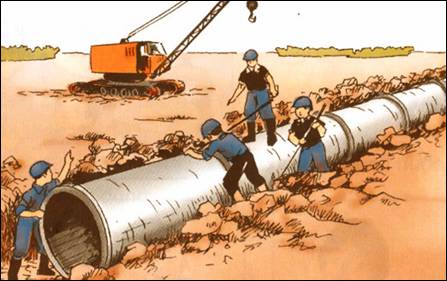
Picture 6. Installing sewage pipes
Attachment 6.I.4.2
Learner activity worksheet
Level : 3 - 5 (Primary level)
Theme : Environment and natural resource
Topic : Protect water sources
Objectives of activities
- To identify activities that should be done and should not to protect water resources
- To improve constructive behavior to protect water resources
- To draw pictures for campaigning water resource protection
Process and Steps:
Process |
Steps |
Note: Time, etc. |
Preparation for learners to participate in the activities
- Group work set up
- Providing learning materials
|
- Dividing students into pairs (Activity 1) and groups (Activity 2)
- Providing learning materials:
- Some A0 papers, paint brushes, for groups
- Pictures
|
Before lesson |
- Activity 1:
Explore some features of water in natural sources |
Pair work
- Observing 6 pictures and indicating actions/things shouldn’t be done to protect water source
- Some pairs present their finding to the class
- Teacher asks learners to relate their finding to the activities of their families, and communities, especially to protect water sources
|
In classroom
- 15 minutes
- 20 minutes
|
Activity 2: Draw pictures for water sources protection campaign
|
Group work
- Making commitments for protecting water sources
- Discussing and design the content for drawing picture to express their commitments
- Each group presents their results to class
- Groups discuss and evaluate the results
|
- 30 minutes
- 15 minutes
|
Reflective questions:
- What can you do to protect water resources around you: river, lake, ponds?
- What should we do and shouldn’t do to protect water sources?
Assessment sheet
Name of teacher : …………………………………………………….
Grade/level : 4
School : …………………………………………………….
Subject Matter Area : Science
Topic : Protect water sources
Instructional Objectives
- To identify activities that should be done and should not to protect water resources
- To improve constructive behavior to protect water resources
- To draw pictures for campaigning water resource protection
|
What |
How |
Who |
Knowledge
Learners are able to understand what should and shouldn’t be done to protect water resources. |
Written test (reflective test) |
Teacher |
Problem Solving Skills
Learners are able to protect water resources. |
Play role in group to find solution of water resource pollution. |
Peers and teacher. |
Scientific Inquiry Skills
Learners are able to observe what families and communities have done to water resources. |
Observation table
(Lickert scale) |
Teacher |
Attitude expression
Learners express the awareness of protecting water sources. |
Attitude table
(Lickert scale) |
Student |
Value Expression
Learners are responsible for protecting water sources. |
Individual activities |
Teacher and parents |
Personal Expression
Learners appreciate the value of water |
Reflective picture for water resource protection campaign. |
Teacher and students |
|













